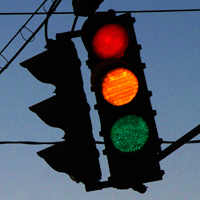What is the meaning of different colors?
Colors in and of themselves have no intrinsic psychological meaning. Instead it is the association of colors with certain events or cultural traditions that can result in the colors seeming to have meaning all on their own. Even with such strong cultural traditions and relationships, it is easy to illustrate that the colors have no meaning on their own with simple counterexamples. While red might signify danger to you, it might evoke happiness and good luck in me. It is not the color red that has meaning, but instead our learned relationships that might seem to create such meaning.
Despite the clear lack of any scientific evidence to link colors with specific psychological meanings or influences, there are many publications that claim to describe exactly what those relationships are and how to decorate a room, dress yourself, or create product packaging in order to produce the intended response in your unwary "victim". It is fun to read about these interpretations, but read such descriptions with a critical eye and think for yourself whether they make sense. For a balanced and critical examination of these topics, I suggest the books by Faber Birren (Color and Human Response) and Jean Bourges (Color Bytes: Blending the Art and Science of Color) that are referenced in topic 8 of The Color Curiosity Shop.
A related topic is the Lüscher Color Test. The Lüscher test has a subject rank order a series of color stimuli, usually eight, by preference. The theory is that the ranking one selects indicates deep-seated psychological tendencies that are not necessarily consciously understood. More recent research has tended to discredit the test by showing that the results do not correlated with more thorough and accepted personality assessments. You might be able to understand this if you read the results of a Lüscher test with a critical eye. The stated results tend to be very generic statements that could apply to anyone, much like horoscopes. Regardless of the scientific validity, the exam and results can be amusing.
![]()
Explore the NEXT TOPIC at this level.
Explore the NEXT LEVEL on this topic.
Ever wonder ... Why is the sky blue?
Updated: Apr. 19, 2011

